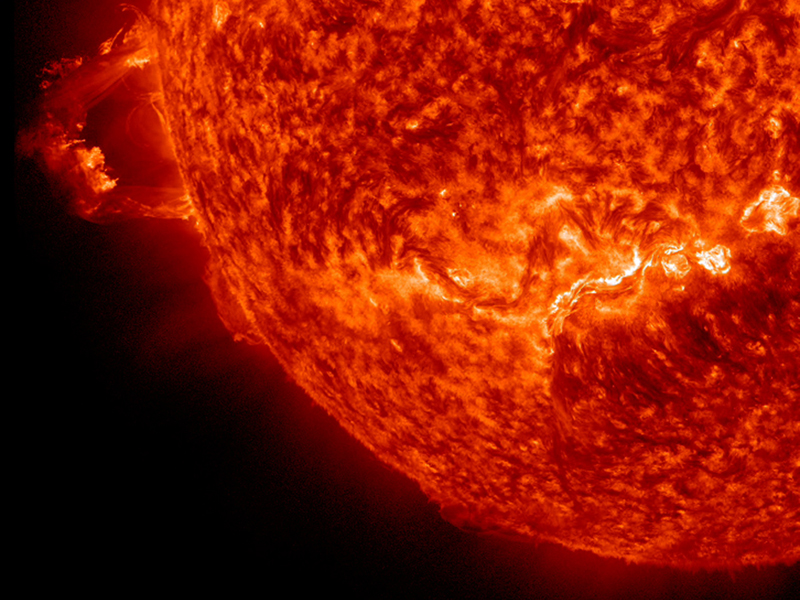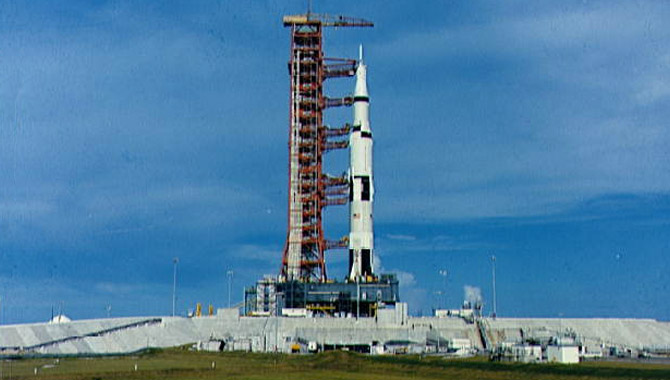
Called the eXtreme Deep Field, or XDF, the photo was assembled by combining 10 years of NASA Hubble Space Telescope photographs taken of a patch of sky at the center of the original Hubble Ultra Deep Field. The XDF is a small fraction of the angular diameter of the full moon. The Hubble Ultra Deep Field is an image of a small area of space in the constellation Fornax, created using Hubble Space Telescope data from 2003 and 2004. The new full-color XDF image is even more sensitive, and contains about 5,500 galaxies even within its smaller field of view. The faintest galaxies are one ten-billionth the brightness of what the human eye can see. Photo Credit: NASA; ESA; G. Illingworth, D. Magee, and P. Oesch, University of California, Santa Cruz; R. Bouwens, Leiden University; and the HUDF09 Team
Vol. 5, Issue 11
Two of APPEL’s most popular courses are now available to NASA employees online.
The NASA Academy of Program/Project & Engineering Leadership (APPEL) continued its efforts to use technology platforms to enhance distribution and accessibility of its training to NASA employees by making APPEL’s “Essentials of Astronomy” and “Earth, Moon, and Mars” courses available online. ASK the Academy sat down with APPEL Deputy Director Roger Forsgren to get the story behind making this course content available and what this means for future learning opportunities with APPEL.
ASK the Academy (ATA): What was the impetus for producing videos of these two courses and sharing them with the NASA community online?
Roger Forsgren: “Essentials of Astronomy” and “Earth, Moon, and Mars” are two of APPEL’s most popular courses. The professors for both courses are well known in their fields and have an extraordinary ability to teach and convey their passion for education. We have offered both courses at all NASA centers for a few years now and we always had turn folks away because there wasn’t enough room. We decided that both courses and both instructors lend themselves well to video recorded course modules so it was worthwhile to pursue this effort.
ATA: Why did you choose these two courses? What sort of learning do they offer to the NASA workforce?
Forsgren: These two courses are particularly relevant to NASA engineers because this is what we do at NASA: we explore our universe and we also look back and study our home planet. After all isn’t that NASA’s core mission? NASA engineers design and build the hardware that does all these amazing things so I think it’s important that they also have a comprehensive understanding of how the work they do in front of their computers, in the labs, and the shops has an even higher purpose: discovery and exploration.
Unfortunately, most engineers don’t have the opportunity to attend these types of courses while earning their undergraduate degrees. But when you think about it, shouldn’t anyone who works at NASA have the opportunity to gain a better understanding of astronomy, the universe, how the Earth and inner planets were formed, tectonics, the Big Bang, and the future of our planet, solar system and universe? These courses allow our employees an opportunity to become more well-rounded and have a better appreciation not only for the universe we live in, but also for their own work in helping to discover and understand it.
ATA: What’s exciting about offering these courses in this way?
Forsgren: We can reach all those NASA folks who wanted to attend the courses but couldn’t because the course was either filled or they couldn’t fit a three-day course into their busy schedules. We can help NASA engineers get a better understanding of how their work is critical in helping the exploration of the universe and their own planet.
ATA: What does this tell us about the future of learning with APPEL and at NASA?
Forsgren: There’s a new paradigm out there for education – the marriage of technology and education. No one seems to know exactly where it’s going but everyone who is in training and education realizes they better get on board. All the great schools are doing this – MIT, Harvard, Columbia, etc. Although, we’ve noticed that many of video modules currently out there are lacking in video quality and can feel as though you’re watching it through someone’s cellphone video. We took this into consideration with these two APPEL courses and taped them in high definition. It’s almost as good as having a front row seat while listening to two masterful teachers.
ATA: What do you hope to hear from users in terms of feedback?
Forsgren: I know we’ll never replicate the feeling of being in a classroom and the personal interaction with a professor through a video, but I think this is the next best thing to being there. The video is high definition and divided into modules so NASA employees can either watch segments at their desks or download and watch at their leisure. This is a first for APPEL and we hope to convert more of our curriculum into electronic learning modules. Any feedback will be welcome, we are always anxious to try new ways of helping our stakeholders and customers get the critical training they need to accomplish their missions.
Called the eXtreme Deep Field, or XDF, the photo was assembled by combining 10 years of NASA Hubble Space Telescope photographs taken of a patch of sky at the center of the original Hubble Ultra Deep Field. The XDF is a small fraction of the angular diameter of the full moon. The Hubble Ultra Deep Field is an image of a small area of space in the constellation Fornax, created using Hubble Space Telescope data from 2003 and 2004. The new full-color XDF image is even more sensitive, and contains about 5,500 galaxies even within its smaller field of view. The faintest galaxies are one ten-billionth the brightness of what the human eye can see.
Featured Photo Credit: NASA; ESA; G. Illingworth, D. Magee, and P. Oesch, University of California, Santa Cruz; R. Bouwens, Leiden University; and the HUDF09 Team.









